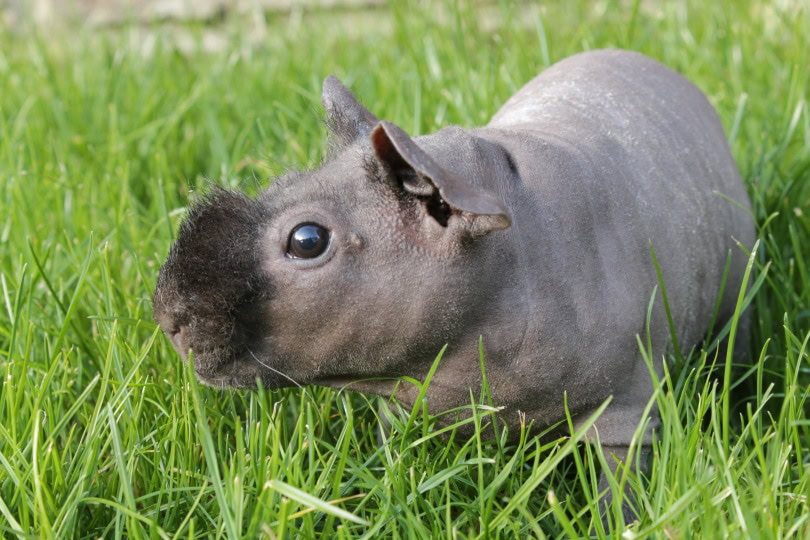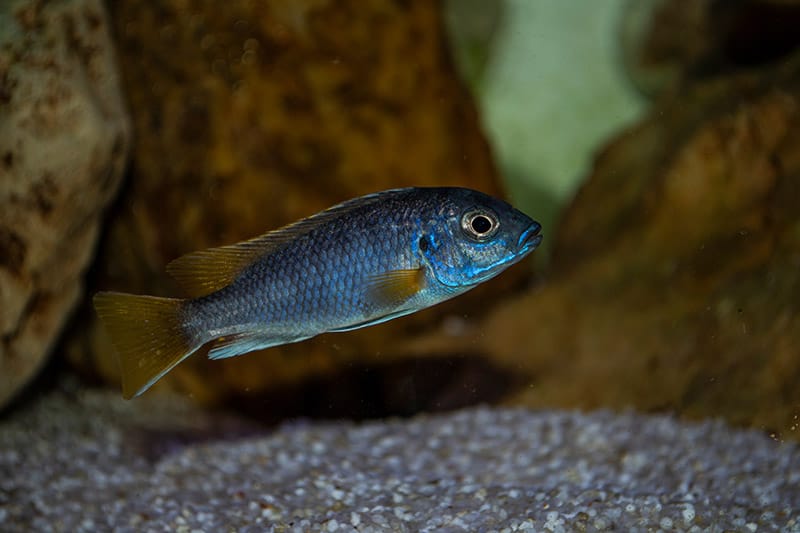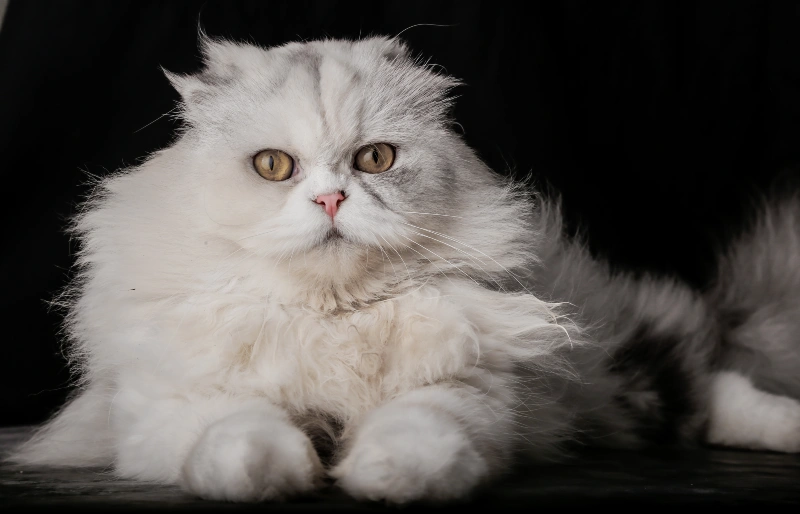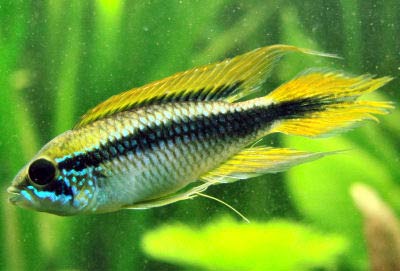Click to Skip Ahead
When you picture a guinea pig, you likely think about their chubby bodies, their adorable noses, and their thick, lustrous coats. Now, imagine a guinea pig without a lustrous coat. Congratulations, you’ve just pictured a Skinny Pig, which many call hairless guinea pigs. These are just like regular guinea pigs, except they have very little hair or none at all.
While not as common as their hairy cousins, Skinny Pigs are growing in popularity. If you’d like to learn more about these adorable little rodents, keep reading.
Quick Facts About the Skinny Pig
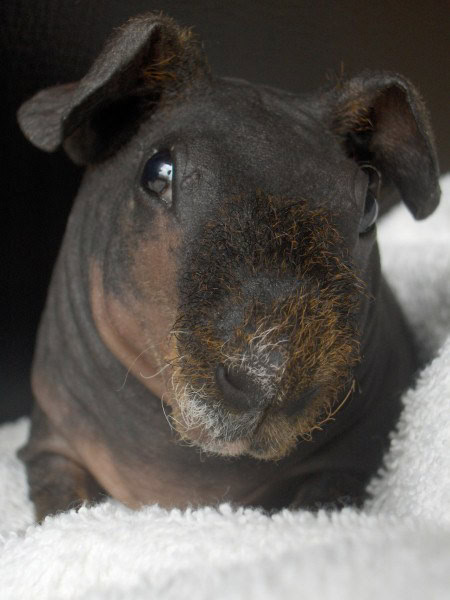
| Species Name: | Cavia porcellus |
| Family: | Caviidae |
| Care Level: | Low to Moderate |
| Temperature: | 65°-75°F |
| Temperament: | Friendly, outgoing, social |
| Color Form: | Dutch, brindle, Himalayan |
| Lifespan: | 5–7 years |
| Size: | 9–12 inches long, 1-2 pounds |
| Diet: | Hay, pellets, fruits, veggies |
| Minimum Tank Size: | 7.5 square feet per pig |
| Tank Set-Up: | Minimal |
| Compatibility: | Highly social with other guinea pigs |
Skinny Pig Overview
There’s very little that makes Skinny Pigs different from regular guinea pigs. They need most of the same care, including the same diet and habitat. It is believed that the hairless pigs resulted from a spontaneous genetic mutation in 1978, but by the early 1980s, they were being bred specifically for their hairlessness.
In addition to being wonderful pets, their lack of fur makes them ideal for lab use, especially in dermatological studies. The reason that they’re used in such studies is that their skin is similar to that of humans. Skinny Pigs are legitimately adorable and are as fun to observe as regular guinea pigs.
Not every Skinny Pig is hairless; some have bits of fur on their muzzles, feet, legs, or back, but they all generally have more bare skin than those with fur. The ones with more hair than you’d expect from a Skinny Pig are called “werewolves.”
How Much Do Skinny Pigs Cost?
Skinny Pigs used to be the unwanted guest at the family reunion regarding guinea pigs. However, in recent years, they’ve become quite the trendy pet, and as a result, the average cost of one has been climbing.
Generally speaking, you can expect to pay anywhere from $100 to $200 for a Skinny Pig, but the price increases for pigs with special colors. Also, remember that they are social animals, so you’ll likely need to buy at least two of them, but they can get along with regular guinea pigs as well.

Typical Behavior & Temperament
Like all guinea pigs, Skinny Pigs are social and outgoing. They love being around friends, whether other guinea pigs or their owners. They are usually quite vocal with their pals, and you’ll often hear them chattering loudly.
They’re less confrontational and aggressive than regular guinea pigs, so you shouldn’t have too many territorial disputes on your hands. They prefer to shy away from conflict rather than face it head-on.
They enjoy affection and being taken out of their cage, but be careful since they’re delicate.
Appearance & Varieties
A Skinny Pig’s body is like that of any other guinea pig. It is only the hair that’s different. Skinny Pigs usually aren’t entirely bald but have little bits of peach fuzz on some parts of their bodies.
Skinny Pigs all have large patches of bald skin, which makes them more susceptible to sun damage and makes it harder for them to regulate their temperature. They’re also susceptible to dry skin and are prone to contracting mites.
They’re available in several colors and patterns, including brindle, Himalayan, and Dutch.
- Chocolate
- Cinnamon
- Silver
- Lilac
- White
- Golden
Like all guinea pigs, Skinny Pigs have short, stout legs that make them accomplished diggers. They also have long whiskers that allow them to feel the area around their head and a strong sense of smell, which compensates for their poor eyesight.
How to Take Care of a Skinny Pig
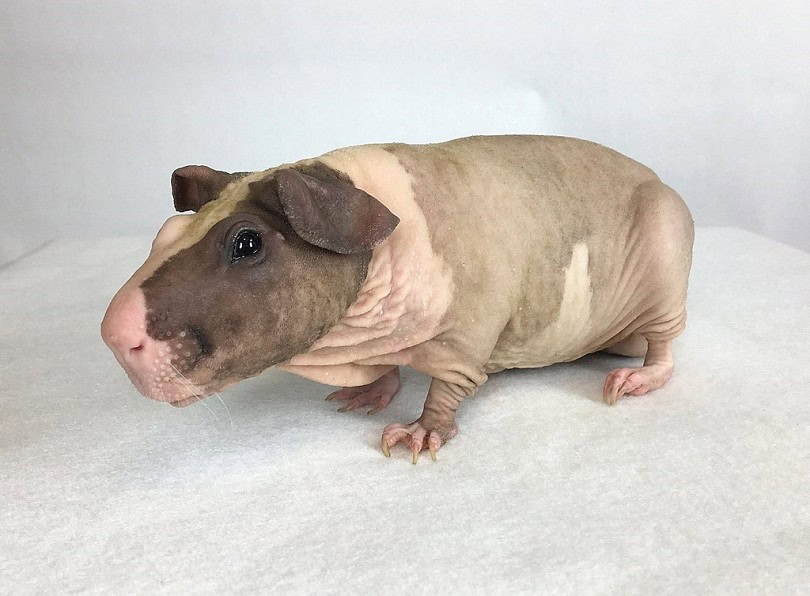

Habitat, Tank Conditions, & Setup
Cage
Each Skinny Pig needs at least 7.5 square feet of tank space, but since you’ll likely need to keep several at a time, you’ll want a tank that’s larger than that. They enjoy going up and down different levels, but they need enough floor space to explore, so try to have a tank that’s at least as wide as it is tall. You can mitigate the need for horizontal space by letting them out of their enclosure to run around.
They’ll also need plenty of toys for enrichment. Keep in mind that the more room your rodent has, the better they’ll be able to separate their bathroom area from the rest of the tank. Besides being healthier for your pet, it makes their cage easier to clean.
Bedding
Skinny Pigs should have plenty of substrate lining the bottom of their cages to dig down when they get cold. Aim for paper shavings or similar products, as cedar and pine contain chemicals that can harm your pet if ingested. Even if your pig doesn’t eat them, the fumes can be harmful to their respiratory system.
Temperature
Since Skinny Pigs don’t have any fur (or at least not much of it), they have trouble regulating their internal temperature. Their cage needs to be kept between 65° and 75°F; they should also be kept away from anything that affects their core temperature, like vents, fireplaces, and direct sunlight.
Lighting
Skinny Pigs don’t have any special lighting needs. They’re not nocturnal, so they should be kept where they can see the sun rise and set naturally. You don’t need to manipulate their light exposure artificially, however.

Do Skinny Pigs Get Along With Other Pets?
Skinny Pigs do well with other guinea pigs and thrive when they have company. You should ensure they have at least one other pig with them to keep them company unless you plan to spend a ton of time with them regularly.
Regarding other pets, it is generally not your Skinny Pig that you need to worry about. Dogs and cats can prey on them, so you shouldn’t let larger pets near them. Skinny Pigs are unlikely to get along with smaller rodents, and we recommend only pairing them with other guinea pigs.
What to Feed Your Skinny Pig
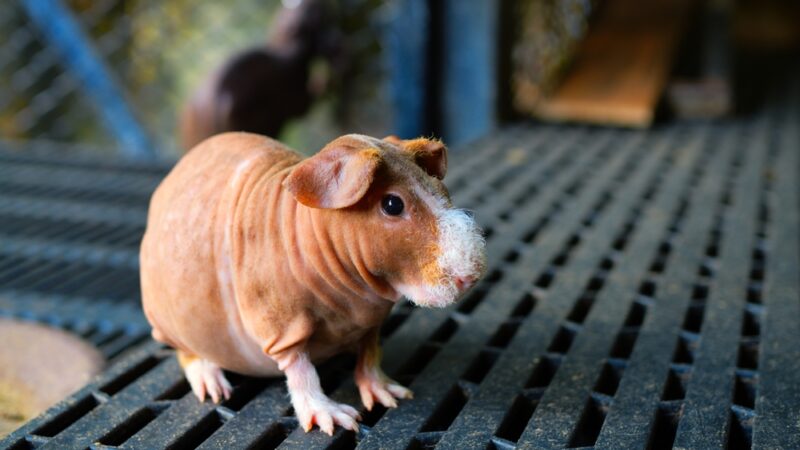
Your Skinny Pig’s diet should consist primarily of hay, either Timothy or another low-fiber variety. Not only does this have all the nutrition that they need, but gnawing on the hay also helps file down their teeth. If they don’t have something like hay to chew on, their teeth will continually keep growing, causing all sorts of dental issues.
You can also give them pellets made of Timothy hay. Skinny Pigs need a source of vitamin C, and they can eat bell peppers, tomatoes, asparagus, and other veggies.
They like other vegetables, too, including leafy greens, cauliflower, carrots, and squash, and fruit, including pears, kiwi, oranges, and apples. Just don’t feed them fruits too often, as they’re high in sugar and can cause diabetes and other weight-related issues.
Skinny Pigs’ metabolisms have to work harder than those of other guinea pigs to keep their core temperature up, so you’ll need to feed them more as a result. It’s vital not to overfeed them, but your vet can provide feeding tips.
Keeping Your Skinny Pig Healthy
Besides skin-related care, there’s not much that Skinny Pigs need that’s unique to them. Like all guinea pigs, they need their cages kept clean, with the bedding changed daily if possible.
They don’t need much bathing, if any, and bathing them too frequently can dry out their skin. If their skin becomes dry, you can use a tiny bit of natural moisturizer, like coconut oil, but never use any lotions designed for humans.
You’ll need to clip or file their nails occasionally, as their lack of hair can make them more prone to scratching their skin if their nails get too long.

Breeding
Breeding a Skinny Pig is more complex than breeding regular guinea pigs, as they tend to be larger at birth. They also have larger litters, so the births are more likely to suffer complications. The first pregnancy is usually the hardest, but they’re all a bit touch-and-go.
Some experts estimate that 20% of female guinea pigs won’t survive the pregnancy and birthing. Those same experts often recommend leaving the breeding process to those with experience, as doing it yourself can put your Skinny Pig in serious danger.
If you decide to breed your Skinny Pig, separate the boar and sow immediately after birth. Females can get pregnant within hours of giving birth, but doing so is extremely bad for their health.
Are Skinny Pigs Suitable for You?
If you love guinea pigs but want one with a little bit of a twist, consider adopting a Skinny Pig. They’re as adorable and loving as regular guinea pigs, but their bald appearance helps them stand out in a sea of furry pets.
You’ll have to pay more since they’re hard to breed and in high demand. They also require more care, as they’re less able to regulate their body temperature and are prone to a few more health problems.
If you’re willing to pay the price, you’ll have a wonderful, outgoing pet that will never fail to put a smile on your face.
You may also like:
Featured Image Credit: GoldMillie, Shutterstock
